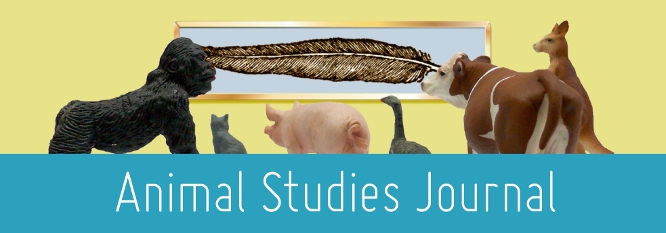Home > assh > ASJ > Vol. 8 (2019) > No. 2

Abstract
The Grass Library constitutes its own genre – a memoir of embodied humans and animals who write themselves not quite equally into the text – the nonhuman takes precedence. On the cover, fittingly, the human is an absence although there is evidence in the background, full bookshelves and a water bowl lovingly placed on a window shelf. In the foreground is one of the principal subjects, an assertive presence who gazes directly at the viewer with sheep-openness and beauty. Brooks mentions an antiquarian library elsewhere that had been subjected to ‘the scrutiny of grass’ (65). This book too has been scrutinised by grass, by nonhuman ways of being, by their narratives and their desires. If this book was originally conceptualised as part of a project ‘exposing animal cruelty’ (16) it is also a celebration of transpecies love and of living together. It is a book about writing ethically about animals, and what the process of writing reveals.
Recommended Citation
Woodward, Wendy, [Review] David Brooks, The Grass Library. Brandl and Scheslinger, 2019. 223pp, Animal Studies Journal, 8(2), 2019, 259-261.Available at:https://ro.uow.edu.au/asj/vol8/iss2/15
Included in
Agricultural and Resource Economics Commons, Art and Design Commons, Art Practice Commons, Australian Studies Commons, Communication Commons, Creative Writing Commons, Digital Humanities Commons, Education Commons, English Language and Literature Commons, Feminist, Gender, and Sexuality Studies Commons, Film and Media Studies Commons, Fine Arts Commons, Legal Studies Commons, Linguistics Commons, Philosophy Commons, Political Science Commons, Public Health Commons, Race, Ethnicity and Post-Colonial Studies Commons, Sociology Commons, Theatre and Performance Studies Commons

